Endocannabinoids
Endocannabinoids are substances (tissue hormones with a neurotransmitter function) that act on the body's own endocannabinoid system (ECS). The ECS is a 600 million year old signalling and regulatory system that regulates vital physiological processes and the development of all living organisms (with the exception of insects). The ECS is involved in all physiological processes and serves as a control element for various system components, which is why its importance is constantly growing and is becoming the focus of medical research.
A lecture on the endocannabinoid system by Philip Schmiedhofer.
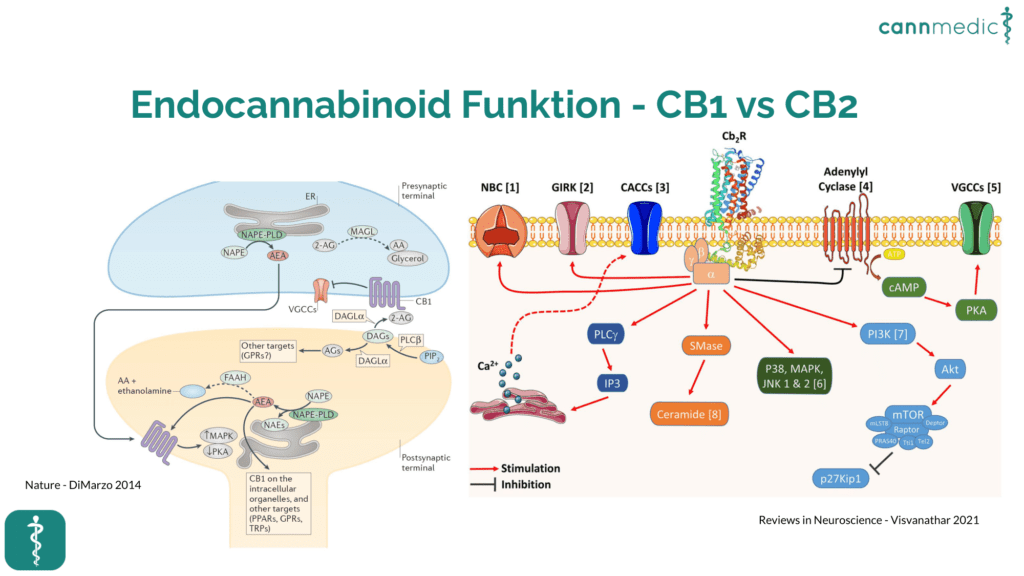
Cannabinoids
Cannabinoids were first discovered and named when an Israeli researcher, Raphael Mechoulam, investigated the effect of tetrahydrocannabinol (Δ9-THC), the psychotropic active ingredient of the hemp plant (Cannabis sativa). This is active at an intra- and extracellular metabotropic receptor, the cannabinoid receptor 1 (CB1), and was thus able to contribute to the discovery of the ECS. The CB1 receptor is also the most common receptor in the central nervous system and is found both in the membrane of cells and on that of organelles such as the mitochondria. Its activation sets in motion a signalling cascade which, depending on the graduation and condition of the cells, produces various effects that can serve both to protect and destroy the cell.
The endocannabinoid system
The ECS consists of several receptors, endogenous cannabinoids (eCB) and enzymes that synthesise and degrade them from signalling molecules, fatty acids and phospholipids as required. The most important endocannabinoids are 2-AG (2-arachidonoylglycerol) and anandamide (arachidonylethanolamide), which play an important regulatory role. 2-AG is a full agonist, i.e. the main active ingredient for the endocannabinoid receptors CB1 and CB2, but is also a modulator of other endogenous receptors and occurs in approx. 1000 times the frequency of anandamide.


The endocannabidome
Anandamide, on the other hand, has a stronger effect on the CB1 receptor, but is only produced locally and in certain situations. The name anandamide is derived from the Sanskrit word "ananda" and means happiness. Anandamide is also responsible for the "runner's high", in contrast to the previously assumed endorphins. The "crosstalk", the networked communication ability of various signalling systems, has occupied scientists for many years, which is why the endocannabinoid system continues to grow in size and importance, as more and more components are being assigned to the ECS, which is increasingly referred to as the "endocannabidome".
Functions of the endocannabinoid system
The ECS can locally regulate the course of certain diseases and the development of certain tissue types. Endocannabinoids are influenced by a variety of physiological effectors as well as epigenetically. Sleep, exercise and nutrition (especially fatty acids) as well as internal stressors such as inflammatory factors and reactive oxygen molecules have a direct proven influence on the activity of the endocannabinoid system.
Cannabinoids can be divided into endogenous cannabinoids (endocannabinoids), cannabimimetics (substances that mimic endogenous cannabinoids), plant cannabinoids (phytocannabinoids - pCB) and synthetic cannabinoids (sCB).
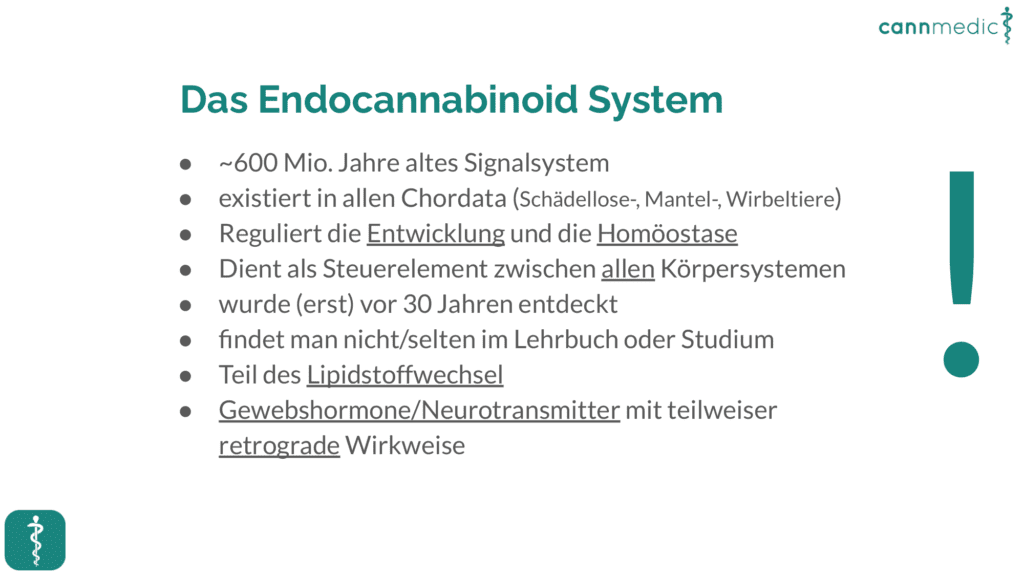

Cannabimimetics
Both phytocannabinoids and synthetic cannabinoids have been used successfully for many years in the treatment of various diseases, even though clinical research into these substance groups is still at the beginning of a marathon.
There have been some setbacks in the field of synthetic cannabinoids, with the result that only Cesamet (synthetic THC) is currently available as a finished medicinal product. The selective CB1 antagonist rimonabant, which was to be used to reduce obesity, was withdrawn from the market due to the increased occurrence of side effects such as depression and suicidal thoughts. Another active ingredient designed to inhibit FAAH (fatty acid amide hydrolase), the enzyme responsible for the breakdown of endocannabinoids, has already shown severe side effects in clinical research.
Safety profile of phytocannabinoids
These setbacks can be attributed to the poor safety profile of synthetic cannabinoids as they interfere with physiological processes with too much selectivity and too little local effect. In contrast, phytocannabinoids have been able to assert themselves as very safe alternatives. Dronabinol, a semi-synthetic and highly pure extract isolated from the hemp plant consisting of Δ9-THC, has been used successfully for many years in pain and palliative therapy. In addition to the flowers of the hemp plant, which are becoming increasingly popular worldwide as a pharmaceutical product, other isolated phytocannabinoids are also developing into medical tools.
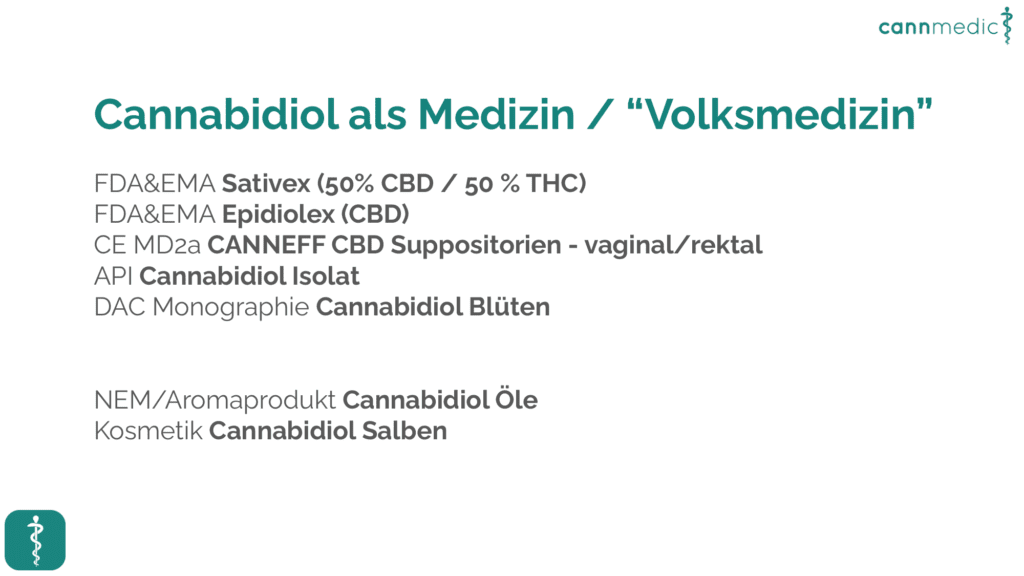
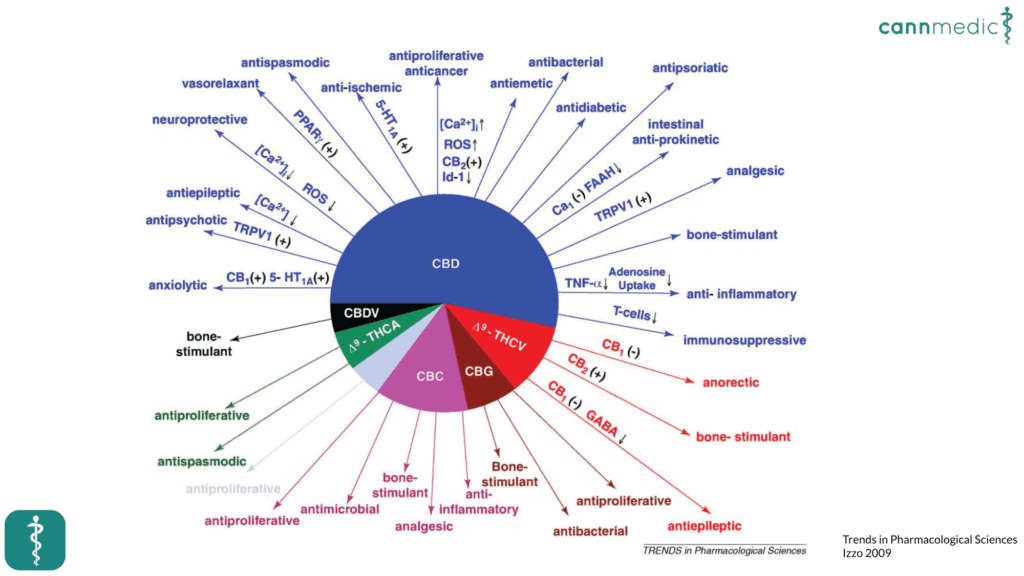
Cannabidiol (CBD)
Preclinical research has highlighted the effectiveness of certain phytocannabinoids. Cannabidiol (CBD) in particular is moving further and further into the limelight. CBD is a phytocannabinoid found in industrial hemp and has no psychotropic properties. Unlike Δ9-THC, CBD is therefore tolerated in high doses and has a broad effect profile. CBD has antiepileptic, anxiolytic, anticonvulsant, anti-inflammatory, neuroprotective, analgesic and antioxidant effects. There are a number of chronic diseases that are predestined for the use of cannabidiol.
Phytocomplex
GW Pharmaceuticals (now JAZZ Pharmaceuticals) was one of the few companies to succeed in getting a herbal hemp extract authorised as a finished medicinal product. Sativex contains both the psychotropic active ingredient THC and cannabidiol (CBD) in a balanced ratio. The company's approach here is to assign plant extracts to a specific "therapeutic handshake" that is suitable for the treatment of certain diseases. This is a decisive difference to the use of highly specific active ingredients and thus marks a turning point in the pharmaceutical industry. Sativex is used to treat the symptoms of multiple sclerosis. With the successful approval of Epidiolex, the company achieved a further breakthrough in the treatment of rare diseases. CBD has been successfully used in the treatment of childhood epilepsy (Dravet syndrome and Lennox Gastaut) and is characterised by its safe profile, even at high doses. CBD is also available as an API for use in magistral preparations and can be used in oily solution, suppository, topical or capsule form.
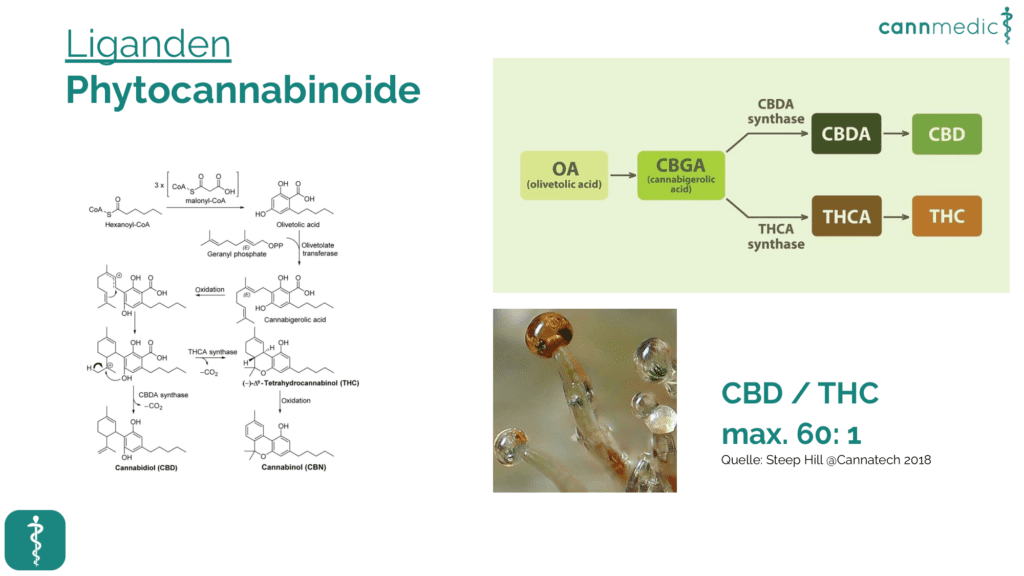
Medical devices with cannabidiol
In addition to medicinal products, there is also Europe's first over-the-counter medical product containing CBD. The company cannhelp sells Europe's first over-the-counter medical product containing cannabidiol (CBD), under the name Canneff, for hormone-free therapy of intimate complaints such as vaginal dryness, vaginal complaints, intestinal inflammation, fissures or haemorrhoids. These suppositories containing CBD for rectal and vaginal use clearly demonstrate the potential applications of CBD in certain medical niches.

The difference between medicinal products and functional food
Another trend in recent years has been the use of hemp extracts containing CBD in food and other consumer goods. These products certainly have the potential to maintain health, but must be clearly distinguished from medical products. The business with legal cannabis products is not only flourishing in North America. In recent years, sales of products containing hemp extracts have also risen steadily in Europe. Many people are relying on them to help them cope with the stresses and strains of everyday life. However, industry players are still navigating choppy waters due to the lack of clarity in the current legal framework.
It is clear that hemp extracts must not be reduced to medicine. The outcome of the ongoing authorisation of hemp extract as a novel food is still open in view of the escalating conflict surrounding this flourishing market. The medical benefits of cannabidiol are constantly being researched. Nevertheless, it is still unclear where and how the line is drawn between medical applications and the functional food / lifestyle market.
Cannabidiol as a novel food
Cannabidiol in food is certainly justified due to its strong antioxidant and thus cell-protecting effect. More social education is needed here and there is a need for political action to maximise the benefits of CBD for people and to draw a clear line between it and the treatment of serious illnesses.
The duel for this flourishing market between the pharmaceutical and food industries is intensifying. Only with a holistic approach and knowledge of the endocannabinoid system can the full potential of cannabinoids really be utilised

